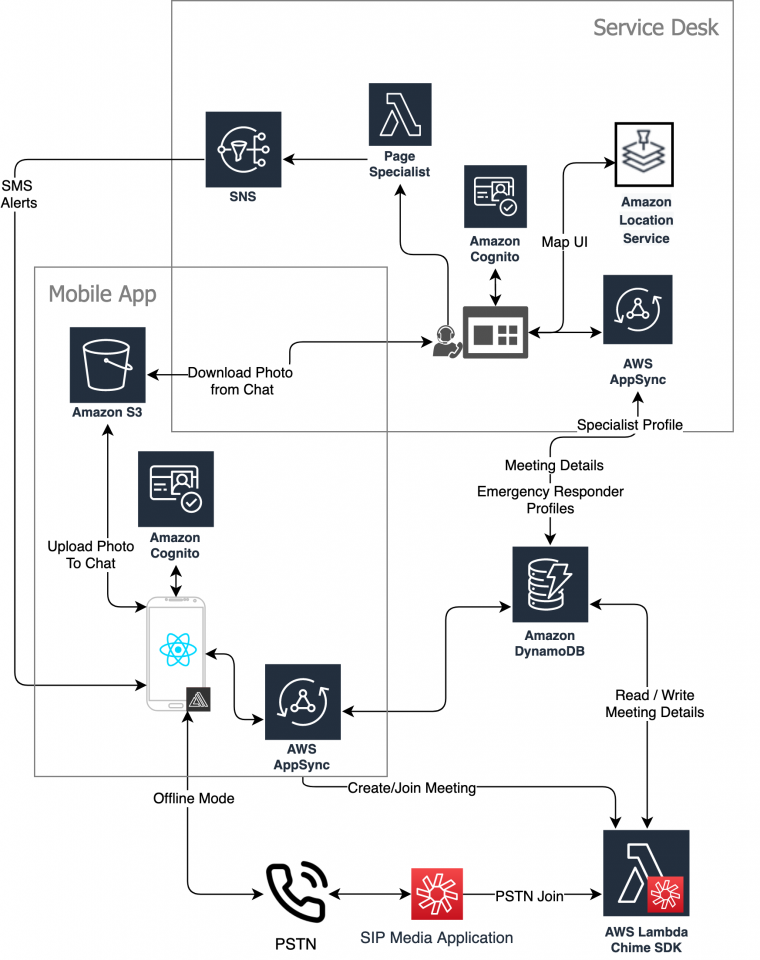Virtual Communication for Remote First Responders
The Shock Trauma Air Rescue Service (STARS) increases critical care support for first responders in remote areas by creating a new communication platform to provide medical and logistical assistance in emergencies.
Overview
Emergency responders in rural and remote areas – such as first responders, firefighters, police, and paramedics – may require additional support in handling the situations they face. STARS partnered with the UBC CIC to develop a prototype for a communications platform to support these rural and remote emergency responders. First responders in rural and remote areas may be faced with complex medical emergencies requiring a greater level of care than they are trained to deliver; this communication solution is an app that provides a medical expert to assist them in providing care during critical emergent scenarios. By bringing expert critical care level medical advice to the patient’s side, this solution aims to reduce morbidity and mortality in pre-hospital and rural emergencies.
Approach
When 911 is called at the scene of a medical emergency, the 911 dispatcher collects essential information and determines if the call should be transferred to STARS. Imagine if first responders could be connected directly to expert critical care medical advice whenever they needed it, wherever they are in Canada, no matter how remote.
The prototype takes the form of an app, which first responders and healthcare providers can access directly once installed on their smartphone, or by calling a 1-800 number if they do not have the tool downloaded in advance. Emergency responders can start or join calls, which are managed by a critical care provider like STARS with an administrative dashboard. Medical specialists, who need to be pre-registered, can enter their areas of expertise and availability into the app, which then notifies them if their presence would be beneficial on a call. The emergency communication capabilities scale according to the available connectivity options, from voice-only to full video.
Supporting Artifacts
Architecture Diagram

Technical Details
The application’s communication features are powered by Amazon Chime, AWS Lambda functions, Amazon S3, and Amazon DynamoDB. Using the Amazon Chime Software Development Kit (SDK), with Chime SIP Media Applications, the application is able to interact with a user who is connected via telephone or data. Chime meetings are created, updated, and deleted by Lambda functions, leveraging DynamoDB tables for the meeting metadata.
The solution contains two frontends: the Service Desk Web App dashboard, which lets STARS manage the incoming emergency requests and invite the physicians to join them; it also offers a map interface for locating ongoing events, built using Amazon Location Service. The mobile frontend is a Progressive Web App (PWA) that allows first responders to initiate a call with STARS and physicians to join the existent calls using their phones.
Link to solution on GitHub:
https://github.com/UBC-CIC/first-responder-mobile-app
https://github.com/UBC-CIC/first-responder-admin
FAQs
Customer FAQs:
Q: Where can I get started with this platform?
A: The solution components are published as open-source and deployable to any AWS Account using AWS Cloudformation.
Q: Will there be a learning curve with using this platform?
A: The application user interface was developed in React and does not require any learning on AWS to be used. The solution infrastructure is based on AWS components and if any change needs to be made it will require AWS knowledge.
Q: If I encounter problems when using this platform, who do I contact?
A: The CIC developed the first prototype as open-source as-is. There is no support or improvement on the solutions after its release.
Q: What kinds of information does this platform track? Are they opt-out?
A: This platform tracks the location of the device being used to log in. However, the user will be prompted by their device to “allow location access”, to which they can select no to opt-out.
Q: What are the requirements for my device and connection to access this platform?
A: The mobile app works on data and PSTN. The HelpDesk dashboard works on data.
Q: Does this replace 911?
A: No. This is a solution to enable access to physicians from critical care services like STARS during critical events.
Q: How do I register on the spot?
A: The mobile app can be downloaded and the person who needs to access the service only needs to validate its phone number to start using it.
Q: Do I need to be a licensed healthcare professional to register?
A: The process of verifying licensed HC registry is outside of the work of this project.
Q: Does this comply with HIPPA legislation?
A: Most of AWS services are HIPPA compliant. More information at: https://aws.amazon.com/compliance/hipaa-compliance/
Q: Do I have any liability from using this service?
A: The CIC creates prototypes and not production ready applications. If this application goes into production, the service provider needs to involve either an AWS Partner or its own resources to make sure the service is operationally ready.
Stakeholder FAQ’s
Q: Are videos, images, and call recordings stored securely?
A: This prototype uses Chime basic features, which do not include call recording. By enabling the Chime pro features the call recordings can be enabled and stored securely into an Amazon S3 bucket.
Q: What is the cost to maintain this solution?
A: This solution is based on AWS managed components and costs are based on the number of calls made per month. For a detailed cost breakdown, please visit the GitHub repo.
Q: Can this platform evolve? Remote monitoring devices?
A: Yes. Any developer who is willing to contribute to the open-source solution is free to do so. The CIC is not responsible for continually evolving the solution.
Acknowledgements
The Amazon FLASH team (Godot Bian, Tom Jin, Abhishek Sahay), the AWS Chime team (Marc Wynter).
Header Photo Credit – “Scenes from The University of British Columbia (Vancouver BC, Canada)” by @CarShowShooter is licensed under CC BY-NC-SA 2.0
About the University of British Columbia Cloud Innovation Centre (UBC CIC)
UBC’s CIC is a public-private collaboration between UBC and Amazon. A CIC identifies digital transformation challenges, the problems or opportunities that matter to the community, and provides subject matter expertise and CIC leadership.
Using Amazon’s innovation methodology, dedicated UBC and Amazon CIC staff will work with students, staff and faculty, as well as community, government or not-for-profit organizations to define challenges, to engage with subject matter experts, to identify a solution, and to build a Proof of Concept (PoC). Through co-op and work-integrated learning, students also have an opportunity to learn new skills which they will later be able to apply in the workforce.
UBC’s CIC focuses on Community Health and Wellbeing.

